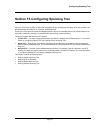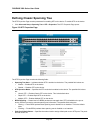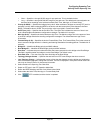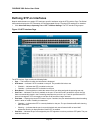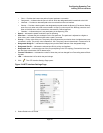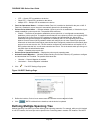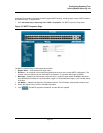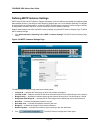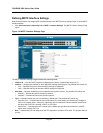
DXS/DWS 3200 Series User Guide
Page 198
– STP — Classic STP is enabled on the device.
– Rapid STP — Rapid STP is enabled on the device.
– Multiple STP — Multiple STP is enabled on the device.
• Fast Link Operational Status — Indicates whether Fast Link is enabled or disabled for the port or LAG. If
Fast Link is enabled for a port, the port is automatically placed in the forwarding state.
• Point-to-Point Admin Status — Indicates whether a point-to-point link is established, or if the device is per-
mitted to establish a point-to-point link. The possible field values are:
– Enable — The device is permitted to establish a point-to-point link, or is configured to automatically
establish a point-to-point link. To establish communications over a point-to-point link, the originating PPP
first sends Link Control Protocol (LCP) packets to configure and test the data link. After a link is
established and optional facilities are negotiated as needed by the LCP, the originating PPP sends
Network Control Protocol (NCP) packets to select and configure one or more network layer protocols.
When each of the chosen network layer protocols has been configured, packets from each network layer
protocol can be sent over the link. The link remains configured for communications until explicit LCP or
NCP packets close the link, or until some external event occurs. This is the actual switch port link type. It
may differ from the administrative state.
– Disable — Disables point-to-point link.
• Point-to-Point Operational Status — Displays the point-to-point operating state.
• Activate Protocol Migration — Indicates whether sending Link Control Protocol (LCP) packets to configure
and test the data link is enabled. The possible field values are:
– Checked — Protocol Migration is enabled.
– Unchecked — Protocol Migration is disabled.
2. Click . The RSTP Settings Page opens:
Figure 126:RSTP Settings Page
3. Define the Interface, Point-to-Point Admin Status and Activate Protocol Migration fields.
4. Click . RSTP is defined for the interface, and the device is updated.
Defining Multiple Spanning Tree
Multiple Spanning Tree (MSTP) provides differing load balancing scenarios. For example, while port A is blocked
in one STP instance, the same port can be placed in the Forwarding state in another STP instance. The MSTP




